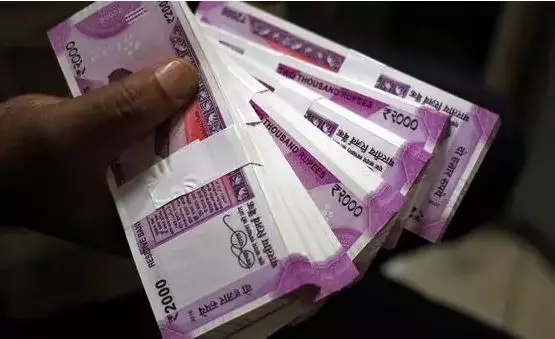
Experts say note withdrawal is to boost liquidity, ease short-term rates: What does it mean
text_fieldsMumbai: The Reserve Bank of India’s decision to call back the highest denomination currency note, the Rs 2,000 note, from circulation is said to be aiming at improving liquidity and mitigating recent spikes in short-term interest rates.
At a time when the withdrawal of Rs 2000 notes as a legal tender became a political issue, the Reserve Bank Governor came out clarifying the air, claiming the decision is part of its routine currency management operations, aiming to maintain a clean note policy and periodically refresh the currency in circulation.
Governor Shaktikanta Das emphasized that the RBI follows a clean note policy and periodically replaces specific series of notes. While the Rs 2,000 notes are being withdrawn from circulation, they will retain their status as legal tender.
Under the new directive, the existing Rs 2,000 notes will continue to be legal tender, and customers holding these notes will have the option to deposit or exchange them for smaller denominations at banks until September 30, 2023. While the value of these notes in circulation is approximately 3.6 trillion rupees ($44.02 billion), analysts and experts suggest that not all of this amount will return to banks as deposits.
Financial analysts and market observers predict that the withdrawal of Rs 2,000 notes is expected to enhance liquidity in the banking system. They estimate that liquidity could see an improvement of around 1 trillion rupees, contingent on depositor behaviour, while QuantEco Research suggests a potential liquidity impact ranging from 400 billion rupees to 1.1 trillion rupees. ICICI Securities Primary Dealership goes even further, estimating that the liquidity surplus could reach 1.5-2 trillion rupees.
Moreover, economists anticipate that the withdrawal of the Rs 2,000 notes will have a lesser disruptive impact on the economy compared to the demonetization exercise in 2016. Short-term interest rates, including the weighted average call rate and rates for government securities, bank bulk deposits, and corporate borrowings, are expected to ease as liquidity surplus improves.
Enhance liquidity: In this context, enhancing liquidity means increasing the availability of liquid assets within the banking system. Liquid assets are those that can be easily converted into cash, such as cash itself or assets that can be quickly sold without significant price impact. By withdrawing the Rs 2,000 notes from circulation, the Reserve Bank of India aims to encourage individuals and businesses to deposit or exchange these notes in banks, thereby increasing the overall availability of liquid assets in the system. This increased liquidity can facilitate smoother transactions, enable banks to meet their obligations and potentially lower borrowing costs.
Reduce recent increases in short-term interest rates: Short-term interest rates refer to the rates at which borrowers can obtain funds for a short period, typically up to one year. Recent increases in short-term interest rates suggest that borrowing costs have risen, making it more expensive for individuals and businesses to borrow money for short-term needs.
By withdrawing the Rs 2,000 notes and increasing liquidity in the banking system, the Reserve Bank of India intends to alleviate this upward pressure on short-term interest rates. With more liquid assets available, banks can potentially lend at lower rates, which in turn can reduce the cost of borrowing for individuals and businesses in the short-term lending market.
The decision to enhance liquidity and reduce recent increases in short-term interest rates through the withdrawal of Rs 2,000 notes aims to increase the availability of liquid assets within the banking system and potentially lower borrowing costs for short-term needs.























